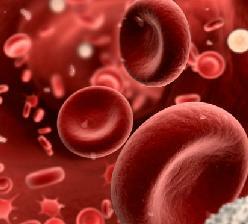 Iron is one of the most important components of blood, which is a necessary component of hemoglobin and takes a direct part in the process of hematopoiesis.
Iron is one of the most important components of blood, which is a necessary component of hemoglobin and takes a direct part in the process of hematopoiesis.
A sufficient level of iron in the body is necessary to ensure the process of binding, transfer and transfer of oxygen in the process of blood circulation. Iron enters our body with food, and after digestion in the intestine spreads through the blood vessels. Stocks of iron in the body are deposited in the liver, bone marrow and spleen.
The general state of the organism depends on the level of hemoglobin. With a lack of iron, a person can experience fatigue, decreased immunity or iron deficiency anemia. With its excess, even more dangerous conditions may appear.
When is the analysis scheduled?
IdentifyThe level of iron in the body is necessary for:
- estimates of iron stores in the body;
- determining the cause of anemia;
- diagnosis of hemosiderosis in chronic hemotransfusions;
- if there are suspicions of iron deficiency anemia after a general blood test;
- when taking medications that have iron in their composition to control the treatment;
- in the diagnosis of iron poisoning, as well as hereditary diseases in which iron accumulates in internal organs (hemochromatosis).
Symptoms
The most common symptoms of iron surplus are:
- fast fatigue;
- abdominal pain (in the liver region);
- hair loss;
- weight loss;
- shortness of breath;
- impotence;
- increased liver size;
- diseases of joints.
If the causes are harmless, then a person may not feel an increase in the amount of the element under discussion in the blood. Only an appropriate analysis will help to notice this.
The norm of iron in the blood
If you take absolute indicators, then in the body of a normal healthy person can contain up to 5 g of this mineral. However, everything is good in moderation. And if the specified norm of the content of iron in the blood is exceeded, it can also have not too pleasant, and sometimes very serious consequences for the body.
In the norm of iron in the bloodshould be present:
- Newborns - 7.16 - 17.8 μmol / l;
- From 1 year to 14 years - 9 - 2, μmol / l;
- Girls and women over 14 years of age - 9.05-30.4 μmol / l;
- Boys and men - 11.65 - 31.2 μmol / l.
Main Functionsof this trace element:
- Providing the necessary structure of the protein molecule of hemoglobin erythrocytes to retain oxygen;
- Participation in oxidative reactions in cells (helps to assimilate oxygen).
The main functions of iron in the blood coincide with one of the main tasks of the blood itself and the hemoglobin contained in it. Blood (erythrocytes and hemoglobin) takes oxygen from the environment into the lungs and transports it to the most remote corners of the human body, and carbon dioxide, formed as a result of breathing tissues, takes out for removal from the body.
Causes of elevated iron in the blood
Why is elevated iron in the blood, and what does this mean? Excess iron can indicate the course of the body in various serious diseases:
- Excessive absorption in the gastrointestinal tract in violation of the limiting mechanism (hemochromatosis).
- Nephritis. Kidney disease, which disrupts the utilization of old elements from the blood.
- Lesions of the liver (viral and acute hepatitis of any origin, acute liver necrosis, chronic cholecystitis, various hepatopathies).
- Poisoning by lead. With intoxication, the disintegration of erythrocytes intensifies, and the functions of the organs participating in the hematopoiesis are disrupted.
- Iron poisoning. Occurs when excessive use of iron preparations.
- Also, the level of iron can increase due to long-term use of drugs, especially hormones and contraceptives.
The manifestation of elevated iron can be various types of anemia:
- Hemolytic- autoimmune destruction of their own erythrocytes or under the influence of toxic poisonous substances.
- Anemia withviolation of the synthesis of porphyrin and heme- is associated with a lack of enzymes in the bone marrow.
- Aplastic- the process of building red blood cells and other elements of blood under the influence of the use of medicines is disrupted (barbiturates, antibiotics, sulfonamides, cytostatics), acute infections, poisoning, X-ray irradiation.
- Anemia associated withlack of vitamin B12- most often a consequence of an operation to remove a part of the stomach with peptic ulcer, a malignant tumor.
As you can see, there are a lot of diseases that can lead to an elevated gland in the blood. Therefore, this phenomenon, which is dangerous in itself, can prove to be a really disturbing symptom.

How to choose probiotics for the intestine: a list of drugs.

Effective and inexpensive cough syrups for children and adults.

Modern non-steroidal anti-inflammatory drugs.

Review of tablets from the increased pressure of the new generation.
 Antiviral drugs are inexpensive and effective.
Antiviral drugs are inexpensive and effective.


